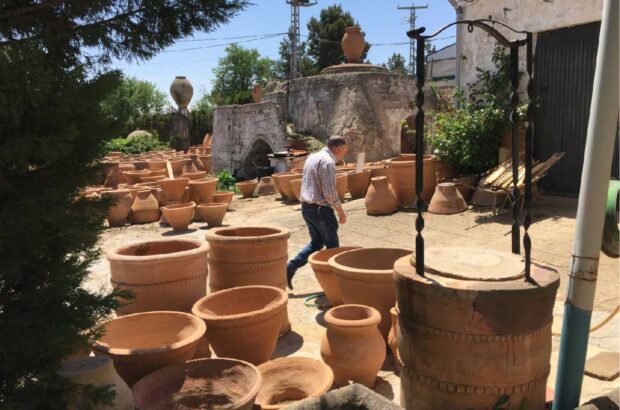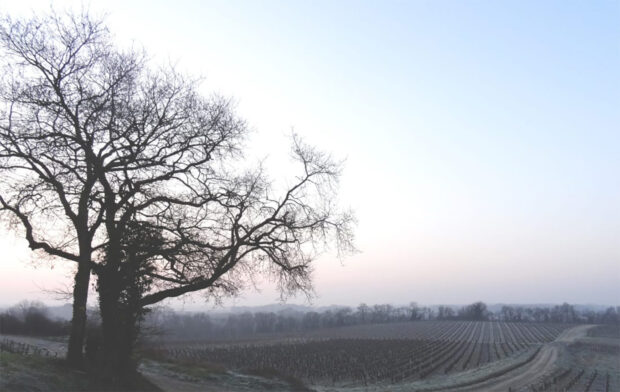Italian wine: Emilia-Romagna region
- Emilia-Romagna is the third largest wine producing region in Italy and churns out more wine than Chile.
- If you ask for a drink in Emilia you get water, in Romagna you get Italian wine!
- These are thoroughbred wines which are the equal of those sought after Super-Tuscans.
Belting back along the seemingly endless autostrada from the Adriatic to Milan, I was tempted to echo the words of Noel Coward. Very flat the Po! This broad valley set out with neat rows of fruit trees and acres of riotous pergola-trained Italian wine vines seemed something of a let down after the aesthetic pleasures of Florence, Sienna and Ravenna. This is Lambrusco country, I thought, as I sped past without giving it a second glance.
Just how wrongheaded can you be? It is true that the plains south of the River Po are flat and featureless and that these fertile soils do yield millions of litres of peculiarly fizzy red wine, but there is much more to Emilia-Romagna than Lambrusco. In fact, there can be few regions in the world that have had quite such an influence on global gastronomy. Parmigiano Reggiano (Parmesan), Prosciutto di Parma (Parma Ham), Mortadella, balsamic vinegar and pastas like tortellini, tagliatelle, lasagne and cannelloni are all native to Emilia-Romagna but have spread world-wide. Add ragù (or Bolognese sauce) to this menu and Emilia-Romagna is the place for a feast.
But what of the wine to go with it? Well, nearly everyone knows that flat, fertile land tends to turn out quantity rather than quality. Take the vast majority of stretched, dilute Lambrusco for example. Emilia-Romagna is the third largest wine producing region in Italy and churns out more wine than Chile. The lion’s share is bubbly Lambrusco, a wine that I soon came to realise evolved as a counterpoint to the local food. Originally these were rustic wines which re-fermented in bottle and were, therefore, unsuitable for export, but they could cut through the richness of a hearty pasta dish smothered in sauce. Nowadays, the fizz is introduced to Lambrusco by the charmat method. Some are made as secco (dry) but most are blended to be medium sweet or amabile in style. There are some seriously good Lambruscos. Deep purple wines like Medici’s Concerto and Bellei’s sappy-spicy Lambrusco di Sorbara are worlds away from the millions of litres of bland, pink wine that have found their way abroad.
There are hills in Emilia-Romagna, rising to mountains on the border with Tuscany. These are often obscured from view by the fogs that linger all day in the valley during the winter and the heat haze in the summer months, but they are the source of the region’s most serious wines. In the west of Emilia are the Colli Piacentini, an area of low, calcareous hills overlooking the city of Piacenza alongside the Po. The best local wine is the enigmatic Gutturnio, a blend of the Barbera and Bonarda grapes. Gutturnio used to be sweet and fizzy, like all things Emilian, but is now still, dry and capable of packing a punch. The Colli Piacentini also produce some of Emilia-Romagna’s most inventive white wines from the Malvasia di Candia grape. If La Tosa’s opulent, almost Viognier-like Malvasi, is anything to go by, these wines deserve a good deal more adulation than Romagna’s lifeless Albana-based wine which was the first white wine in Italy to gain DOCG status in 1987.
In the centre of the region, the Colli Bolognesi traditionally supplied wine in demi-johns to the city of Bologna at the foot of the hills. Enrico Vallania began the slow march of progress towards premium red wines in the 1960s by planting Cabernet Sauvignon and Merlot in the reddish, calcareous clay soils which he christened terre rosse. Unlike wines with a shorter pedigree such as the dark, herbal Bonzarone Cabernet, Vallania eschewed the use of oak, producing wines pure in fruit. Nonetheless, a 1989 Cabernet Sauvignon, cellared by the remarkable Ristorante San Domenico in Imola, had a wonderful cedar and leather quality from ageing in bottle. At the Tizzano estate near Bologna, demi-johns still account for two thirds of sales but the property is gradually shifting towards varietal bottled wines. Pignoletto, Riesling Italico, Pinot Bianco, Barbera and Cabernet Sauvignon are the varieties that make up the Tizzano range to date.
To an outsider, the boundary between Emilia and Romagna, just east of Bologna is no more than a line in the sand, but their peoples still insist on pointing out the divergence. To the Romagnoli, the fundamental difference between Emilia and Romagna is that if you ask for a drink in Emilia you get water, in Romagna you get wine! There is certainly good wine in the hills that stretch eastwards to the Adriatic above the towns of Imola, Faenza and Forli. The leading producer is the energetic Umberto Cesari who bottles a wide range of wines at Castel San Pietro in the Romagna hills. He and his wife started out by buying 20 hectares (ha) of land back in 1965 and Cesari has built his company into one of the largest in the area. Now with 90ha, the company is at the cutting edge of developments in the region, focusing on improvements in the vineyard, as well as the winery. Vine density has increased from about 1,000 to 6,000 plants per hectare and yields have fallen to 2.5kg per vine. Like many other quality producers in the region, Cesari is abandoning the neutral white Albana grape in favour of Chardonnay, Cabernet Sauvignon and Sangiovese, the latter being the subject of a programme of clonal selection. These improvements show through in Cesari’s premium wines, like the barrel-fermented Laurento Chardonnay, Ca’ Granda Sangiovese and Liano, all of which reflect distinct terroirs 200–300m above the plain.
The same trend is being repeated closer to the Adriatic Coast on the hills above Faenza and Forli. Here the landscape has a distinctly Tuscan feel, with vineyards among the cypress trees and umbrella pines. But with 15ha of hillside vineyards, Stefano Ferrucci’s wines seem to have more in common with Veneto than Romagna or Tuscany, Amarone-style and passito being his speciality. Since 1992, the Drei Dona family, on the other hand, have set about showing just what Romagna is capable of with a remarkable range of wines spanning a rich, partially barrel-fermented Chardonnay named Il Tornese, as well as refined yet structured reds made from Cabernet and/or Sangiovese. These are thoroughbred wines which are the equal of those sought after Super-Tuscans, over the hills but not so far away. Following on from the region’s gastronomy, the wines from Emilia-Romagna’s hill country deserve to be much more widely known.
Richard Mayson’s pick of Emilia Romagna wines
Domus Caia (Stefano Ferrucci): a unique, Amarone-style Sangiovese made by drying the grapes on trays for 60–70 days before pressing. Bitter chocolate and black cherry concentration backed by powerful tannins. On a par with the best wines of Valpolicella.
Graf Noir (Drei Dona): a 50:50 blend of Cabernet Sauvignon and Sangiovese selected from the oldest vines and best clones on the family estate of La Palazza on the Romagna hills overlooking Forli and the Adriatic. Dense, close-knit fruit and tannins with Cabernet seemingly the dominant partner, but Sangiovese lending elegance and finesse. One of the finest wines in Emilia-Romagna – outstanding.
Le Grillaie (Celli): a traditional style of Sangiovese: all tea leaf, tobacco, raspberry and tar, having been aged in old wooden botti. Tight, powerful and offset by a cut of acidity. Ripe Sangiovese from the hills near the Adriatic clearly stands up to this treatment without risk of the fruit drying out.
Lambrusco Concerto: cast aside all preconceptions. This fresh, foaming red from the family firm of Medici is a revelation with its vibrant, slightly sweet blackberry fruit and a hint of peppery spice. Perfect served chilled at summer picnics.
Liano (Umberto Cesari): a suave, sophisticated 70:30 blend of Sangiovese and Cabernet Sauvignon with ripe tannins softened by ageing in toasty new (Allier) oak. A Super-Romagnan that would happily compete with a Super-Tuscan, but at a fraction of the price.
Non ti Scordar di me, Albana Passito DOCG (Leone Conti): the Albana grape comes into its own in passito wines. Named ‘forget-me-not’, this wine made from botrytised grapes picked in late November has wonderful richness and intensity with a marmalade character on the finish.
Tizzano Barbera: the most promising newcomer in the Colli Bolognesi making a wonderfully fresh, sappy Barbera redolent of raspberries and pepper. Beats most Beaujolais on quality, quaffability and price.
La Tosa, Gutturnio: a heady 60:40 blend of the Bonarda and Barbera grape varieties planted on the Colli Piacentini. Morello cherry and plum, with foursquare tannins and an explosive finish, this wine manages to carry off 14.5% alcohol.
Pagadebit (Celli): the name of this thick-skinned, white grape variety translates as ‘pay-the-debt’. Planted around the town of Bertinoro, it makes wines with much more character than Albana. Perfumed and floral with crisp acidity.
Stefano Ferrucci Bianco Passito: one of the most unusual wines that I have tasted in a long time, an ice wine made from botrytis-affected Malvasia di Candia. Aromatic and floral with intense, yet balanced, supremely delicate rosewater fruit.
Gastronomy
Aceto Balsamico Tradizionale: the finest balsamic vinegar; intensely sweet, perfumed and concentrated after spending at least 12 years gradually evaporating in ever smaller casks made from oak, chestnut, cherry-wood, juniper and mulberry. Sold in 10cl bottles and reassuringly expensive. Medici (who has set up its own acetaia) has a traditional balsamic vinegar that is good enough to drink.
Ristorante San Domenico: Imola, with its Formula One grand prix circuit, is home to one of the best-known restaurants in Italy; Gian Morini’s San Domenico. The extensive enoteca with over 800 wines is matched by sumptuous food, but the emphasis is on the international rather than Emilia-Romagna.
Ristorante Sandro al Navile: an up-market trattoria in an old watermill on the outskirts of Bologna favoured by local businessmen. Fabulous choice of home-made pasta, a good wine list and a rich home-made ice cream enlivened with a few drops of balsamic vinegar. No Spag. Bol. in sight!
Landscape
Brisighella: hill-town in Romagna famous for its olive oil and the so-called Via Degliasini, or ‘donkey walk’, among the houses at first floor level. The surrounding limestone mountains are incised by calanchi, deep rivulets which give the landscape the desert look of the wild west. The perfect place to film a ‘tortellini western’.
Bologna: with the oldest university in Europe, the tallest medieval tower and 40km of arcades merits an extended visit for its ‘tits, towers and tortellini’ as the local saying goes. Somewhat bizarrely, Bologna is a wealthy city that serves as a centre of commerce and communism. Now that Russia has turned its back on the past, Bologna must be one of the few cities left with a Via Stalingrado (Stalingrad Way).
Dozza: overlooking the vast Emilia-Romagna plain, Dozza is a typical hill-village with houses decorated with modern frescos by famous Italian artists. The fortress at the top of the village is home to the go-ahead regional enoteca with a shop and wine bar. It is the best place to sample the wines of Emilia-Romagna.












